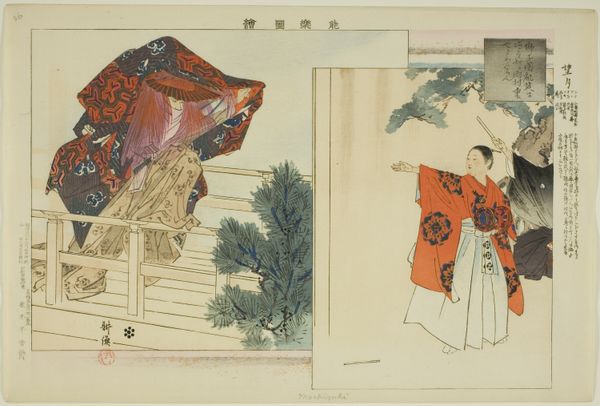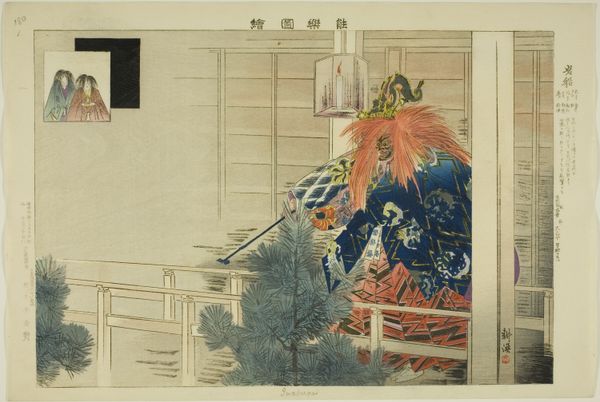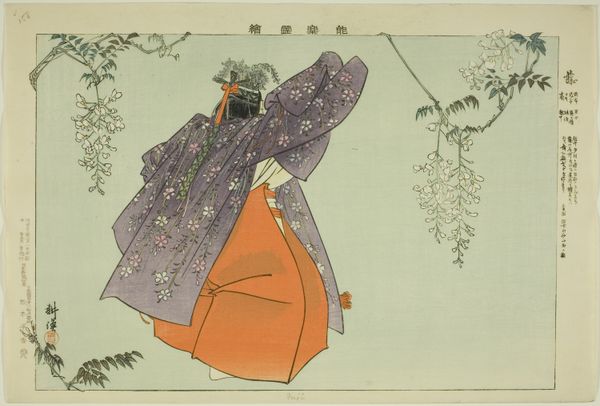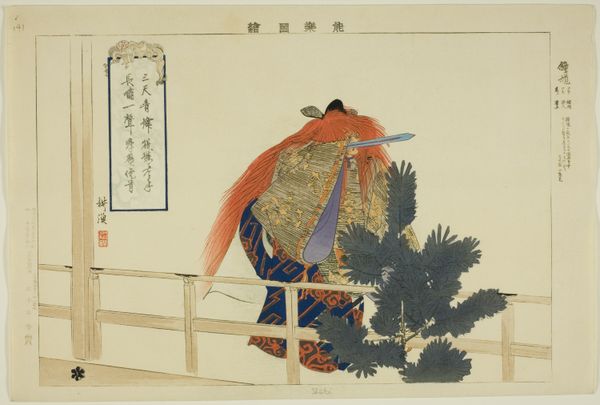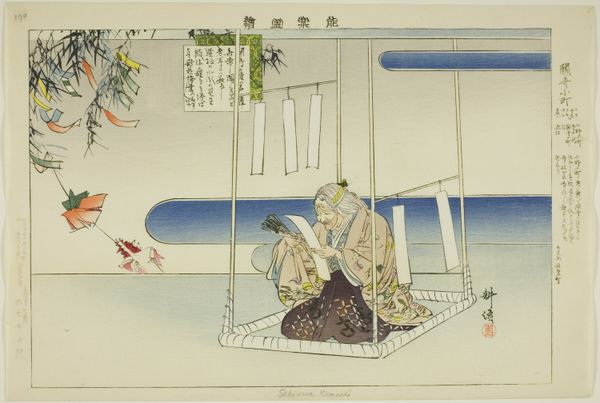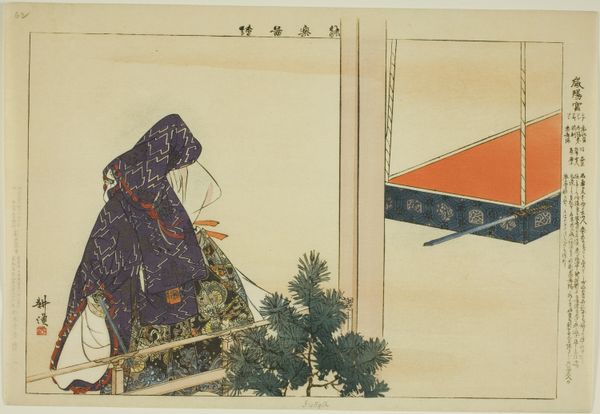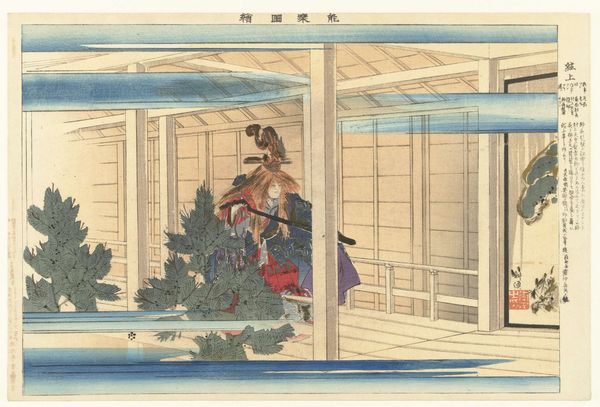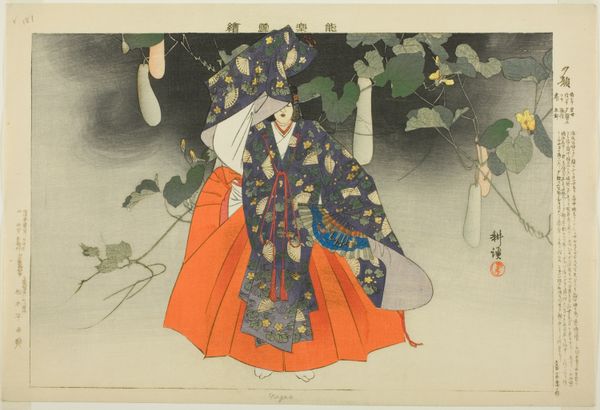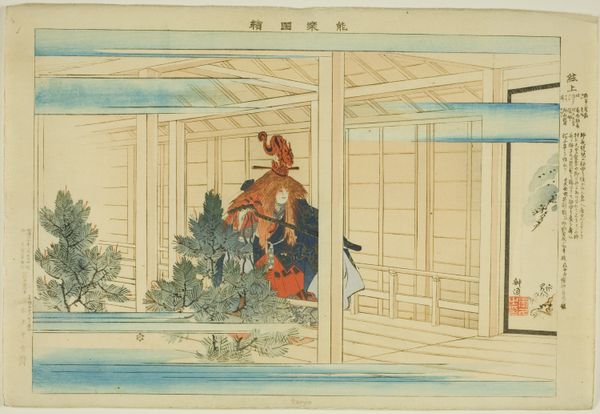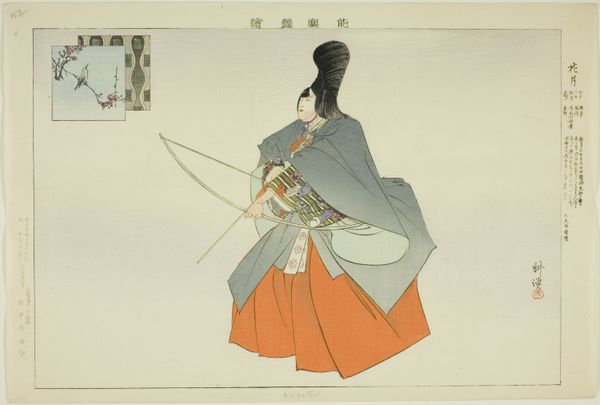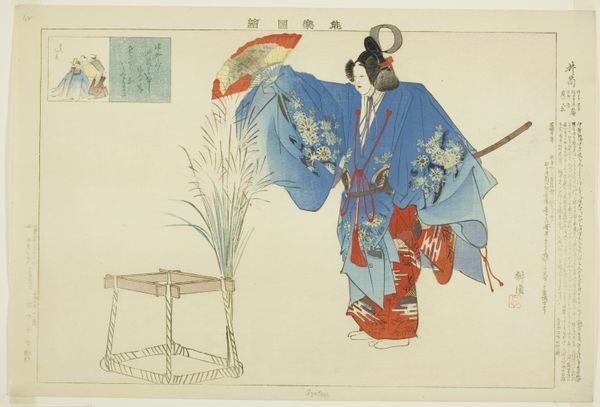
Yo-uchi Soga, from the series "Pictures of No Performances (Nogaku Zue)" 1898
0:00
0:00
Dimensions: Approx. 25.2 × 37.4 cm (10 × 14 4/3 in.)
Copyright: Public Domain
Curator: Standing before us, we have Tsukioka Kogyo's woodblock print, "Yo-uchi Soga, from the series 'Pictures of No Performances (Nogaku Zue)'," crafted in 1898. It's part of the Art Institute of Chicago's collection. What's your immediate impression? Editor: Immediately, I’m struck by its staging. The central figure poised between the detailed naturalism of the tree and the stylized rendering of interior architecture evokes a sense of transition. Almost a liminal space. Curator: Interesting. Contextually, this print references the Soga brothers' vendetta, a popular theme in Noh theater. Noh was experiencing something of a renaissance during the Meiji period, as Japan looked to modernize and revitalize elements of their traditional culture. Kogyo, a prominent figure in preserving Noh traditions, documented the performances meticulously. Note how he portrays Yo-uchi Soga here, almost caught mid-motion, preparing for vengeance. Editor: The diagonal dynamism really underscores that potential for imminent action. Notice also the contrast of textures--the pine's detailed needles, set against the geometric planes and lattices behind. He clearly intends to activate the eye and direct its movement through planes and shapes. Curator: Indeed. And, from a social standpoint, depicting Noh theater, particularly the tales of warrior ethics and filial duty, was a way of reinforcing and celebrating cultural values during this time of change. Museums like the Art Institute then became important stewards of this material. Editor: How do you read the inscription that hovers in the top and right quadrants? Curator: The textual inscription on the right adds layers to the understanding of the central performance depicted; providing commentary and character backgrounds to aid comprehension to its viewers at that time. Its calligraphic quality is something in its own right though, wouldn't you say? Editor: Absolutely. But more so that this careful placement underscores the semiotic value of framing within pictorial compositions; that text and image can be mutually informative while also visually competing and/or complementing each other. Curator: The work acts as an echo of an older Japan, reinterpreting and recontextualizing into a modern, print medium for contemporary audiences. Editor: To look so closely at the surface of this composition also prompts a reminder about the richness of that Japanese cultural heritage to consider and share today.
Comments
No comments
Be the first to comment and join the conversation on the ultimate creative platform.
